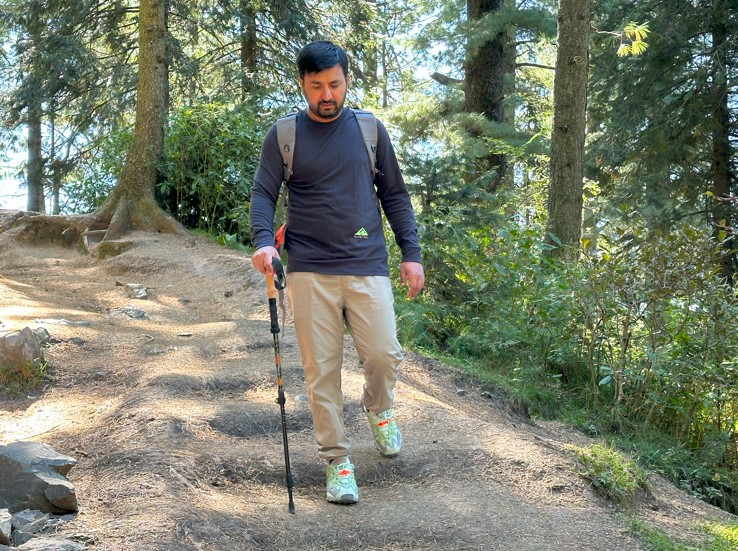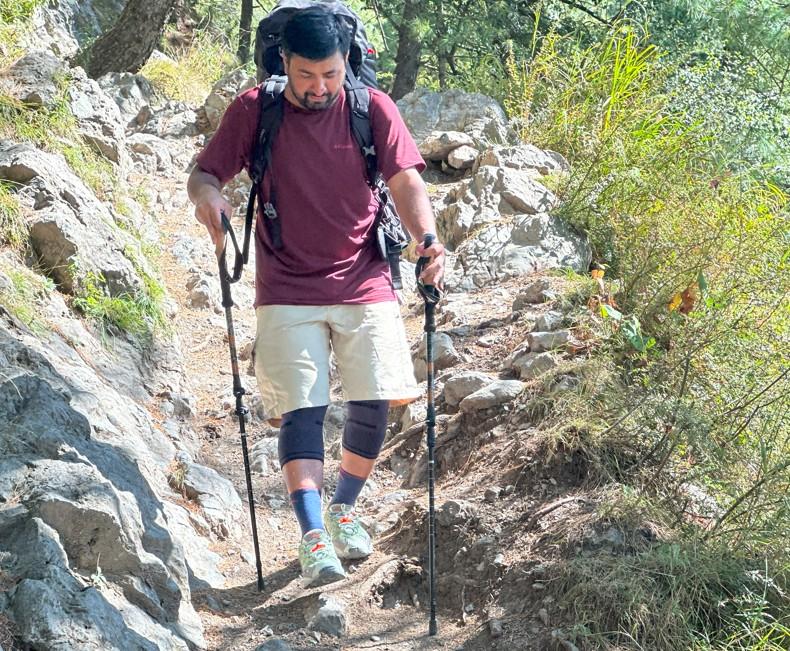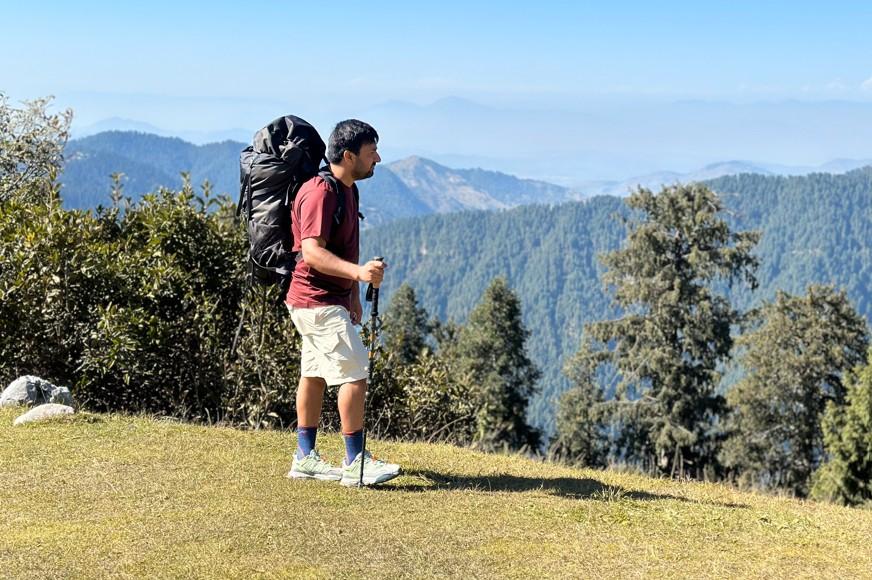The question of “one or two poles” always lingers on the mind of a hiker. While two of them offer stability, one is effective and simple to use. The right choice always rests with the hiker’s needs and preferences; however, the stable option always wins.
Related: Best Budget Trekking Poles
This guide briefly explains the right choice for the hikers, whether to use one or two poles in their hikes.
Why Trekking Poles?
Trekking poles help in many ways.
- Absorb shock
- Help maintain rhythm
- Improve posture
- Provide balance
- Reduce joint strain by distributing weight evenly
Especially in the uneven terrains, hiking poles help in walking and climbing and also reduce joint pain by evenly distributing body weight. Regardless of one or two poles, they help in making your hikes successful and effective.
One Pole – The Minimalist’s Choice
Why Choose one Pole?
A single pole is an effective choice as it offers simplicity and ease, and it is lightweight. In my earlier hikes, I would use one pole, as I found it hard to carry two. I would always use my camera with my other hand.
Furthermore, you can use your free hand for snacks, access to water, and using your phone or compass.

Although it offers less stability, it is also less burdensome than two poles. In my initial hikes as a beginner, I always preferred one pole over two at any given hike.
Best Use Cases
If you have a decent balance and you are confident in your posture, recommend one hiking pole. Personally, I used one pole during my day hikes on well-maintained trails. Furthermore, in urban walks and paced hikes, one pole offers great efficiency. If you have less weight in your backpack, I suggest one pole. It works perfectly in following cases:
- Well-maintained trails
- Day hikes
- Urban or paced walks
- Light backpacks
- Hikers with good balance and posture
The Drawbacks of One Pole
While I used it most of the time, it also had limitations. For example, it causes strain on one side of the body in long hikes due to uneven support to the body. Furthermore, one pole is not effective for rugged paths and terrains. Lastly, it cannot absorb shocks properly.
In short:
- Uneven strain on one side of the body during long hikes
- Less effective on rugged terrain
- Poor shock absorption compared to two poles
Two Poles – The Balanced Approach
Why Choose Two Poles?
Since I am a professional hiker, I also have used two poles on my hikes. Two are better than one, as they offer excellent support to the body and reduce the back pain. Especially on the uneven and rocky terrains, two poles offer better control and even weight distribution.

On uneven terrains, one pole can never match the goodness of two poles. Most of all, two poles reduce knee strain and lower back pain to a large extent. They offer:
- Enhanced support
- Even weight distribution
- Less strain on knees and back
- Greater stability on rocky or uneven terrain
Best Use Cases
There are many places on which two poles are comparatively effective. For places with mountain trails, long-distance treks, backpacking with a load, or hiking downhill or uphill, two poles are always an excellent choice.
Most hikers feel back pain and joint pains, mostly in the knees and ankles; two poles work best in reducing pain in the joints. Best use cases are:
- Mountain trails
- Long-distance treks
- Backpacking with a load
- Uphill/downhill hiking
- Hikers prone to joint pain
The Drawbacks of One Pole
With many perfectly suitable options, two poles add a lot of burdensome weight to the hikers and occupy both hands. It is not a great option, as you will not be able to handle the situation. Compared to one pole, two add slightly less effectiveness in handling gear.
- Heavier and bulkier setup
- Occupies both hands
- Less freedom for handling gear or taking photos
Which one will Work for You?
Before choosing the number of poles, asking yourself some crucial questions can really save the day. What do you want, stability or speed? What kind of trails do you like? Is your backpack lightweight or heavyweight? Are you mostly concerned about your joints or your balance?
These are the questions that lead you to decide the right kind of pole for your hikes. I started with one pole, as I preferred easy hikes in the beginning, and used one pole, which was more than enough, but later on, with the passage of time and accumulation of experience, I used two poles as well.
Comparison Table: One vs. Two Poles
| Feature | One Pole | Two Poles |
|---|---|---|
| Stability | Moderate | High |
| Weight | Light | Heavier |
| Hands Free Option | One free hand | Both hands occupied |
| Ideal For | Short, easy hikes | Long, challenging treks |
| Shock Absorption | Lower | Higher |
| Learning Curve | Minimal | Moderate |
Expert Tips for Any Pole Setup
My hikes are always well planned and structured. I read about the trails first and then select my gear. I suggest the same to all the hikers. There is a lot of advice I can offer to make your hikes effective and memorable.
Firstly, you should keep your elbows at 90° while handling the poles. Wrist straps are always advisable for better grip and ease of use.
Don’t always hold the poles in your hands; free up sometimes for a photoshoot and relax your arms. It will allow you to relax.
I always sync my steps with the poles and create a rhythm for a smoother movement.
One thing that I learned the hard way is the size of your pole. Always make sure to double-check the suitable size, as during the hikes, this is something you will always be adjusting if you choose the wrong size.
Conclusion: One or Two Trekking Poles?
To put it in a nutshell, for beginners and minimalists, one pole offers great ease and simplicity. For maximalists and experts, two poles offer excellent stability and support. You can use one pole mostly through plains and well-structured terrains, while two poles are preferable in rough terrains and with heavy loads. At the end, all that matters is the choice of the hiker, whether a single pole suits their plan or two. If you are still unsure about this, I suggest you start with one pole and gradually move to two if you need to.
Read More:
